
Commodore guitars were sold in the United Kingdom from the late 1960s, through the 1970s (and probably into the early 1980s). There were a number of solid body and semi-acoustic guitars and basses, but the Commodore N25 is probably one of the best known. There doesn't seem to have been much variance over the period of production, though the pickups did change from the black 'staple' pickups with off-set pole pieces shown here, to a similar looking black 'non-staple' pickup with centered pole pieces, probably around about 1973 (although this change was never echoed in the catalogues). The Commodore N25 was only available in this super vibrant two-colour 'Golden Yellow' Sunburst finish. The guitar was made by Matsumoku in Japan, and was included in British distributor Bell's catalogues between September 1970 (where it replaced a very similar model, N177), and January 1974. It had a 1971 list price of £39.99, rising to £59.95 by January 1974.
It was described as follows in the January 1971 Bell catalog
“ Semi-acoustic slim line concert model. Double-cutaway 'cello style, sunburst shaded body and neck. Heavy black and white ivorine edges, rosewood ivorine bound finger board, with pearl position markers, steel truss rod, adjustable bridge, chromium-plated fully enclosed all metal machine heads. Two high response adjustable pick-ups with tone and the volume controls, over-riding rhythm and solo switch, combined tailpiece and tremolo arm. Superb high gloss finish.”
Matsumoku built numerous guitars for different distributors around the world, usually using the same body and neck, with subtle changes in terms of hardware (usually a distinct tailpiece), branding (including headstock shape), and finish colour. Obviously, this model was styled after the Gibson ES-335. As well as the Commodore N25, Matsumoku's 335-style guitar was available branded Aria (5102T), Conrad, Electra (2221), Lyle (5102T), Ventura (V-1001), Univox (Coily) - and many more. But it was most famously available as the Epiphone 5102T / Epiphone EA-250.
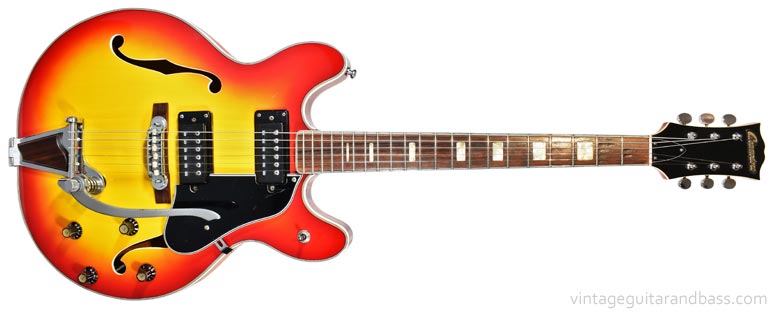
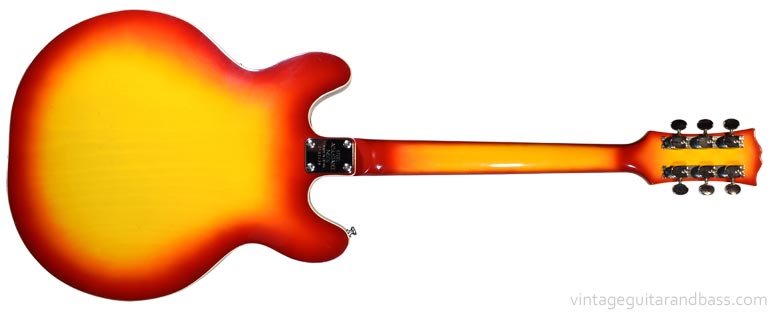
Numerous British guitarists cut their teeth on this model, but interestingly there is very little information available about the N25 or Commodore guitars in general. It's not even totally clear which importer brought them into the country. There is some suggestion online it was Rosetti, however this appears unlikely, as they do not appear in their catalogues of the time, and Rosetti also distributed the near identical Epiphone model (5102T/EA-250) in the UK, and other Matsumoku guitars under the Eros brand - and all of these guitars are included in Rosetti literature.
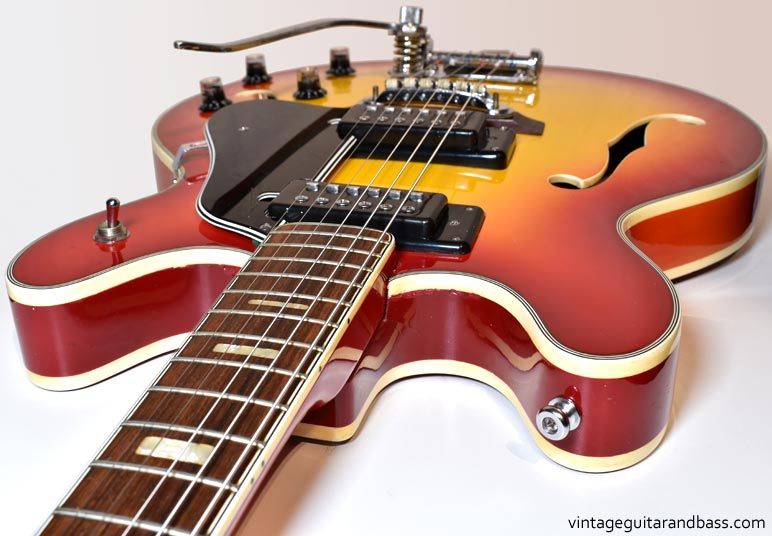
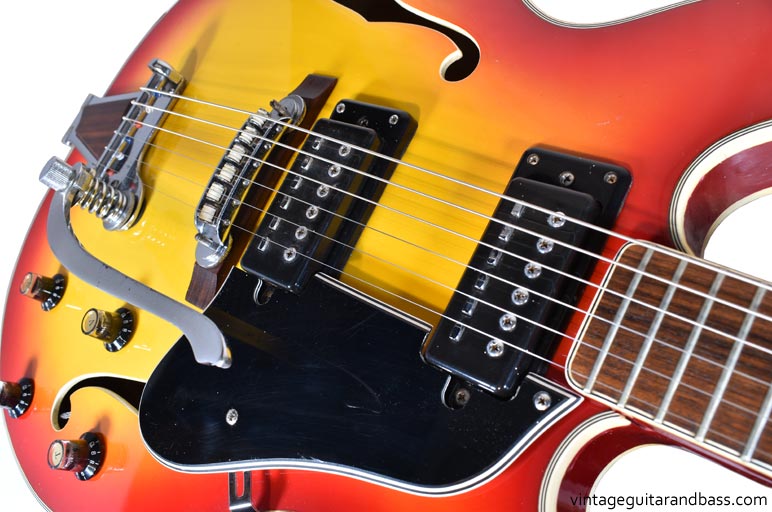
Matsumoku instruments were not at all bad - certainly good enough for Gibson and Gretsch to subcontract them to build guitars for them (under the Epiphone and Dorado brands respectively). They are well-built, out of nice woods, with a fully adjustable bridge, truss rod, and pickups (both height and with individual pole-pieces). However these early-mid 1970s guitars do not have a fantastic reputation. A typical example found today will have been owned by younger players, treated without care, and possibly not given a set-up in 50 years. With a little attention, the Commodore N25 can make a perfectly respectable playing guitar, however many offered for sale are incomplete, and/or in a pretty bad condition. But they are pretty sturdy instruments, and can usually be brought back to a good playable state. In terms of ornamentation, the N25 was far from basic, with its bound front, back, neck and f-holes - plus block neck marker inlays. One not so nice feature of some (but not all) early Matsumokus is the plastic headstock logo pinned in place. Frankly a decal would have been cheaper to produce, and looked a whole lot better! The (generally far more desirable) Epiphone equivalent model to this guitar actually had a nice inlaid Epiphone logo, but is identical in terms of functionality.
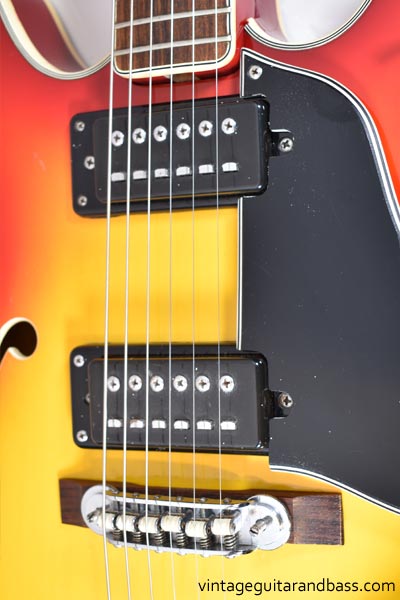
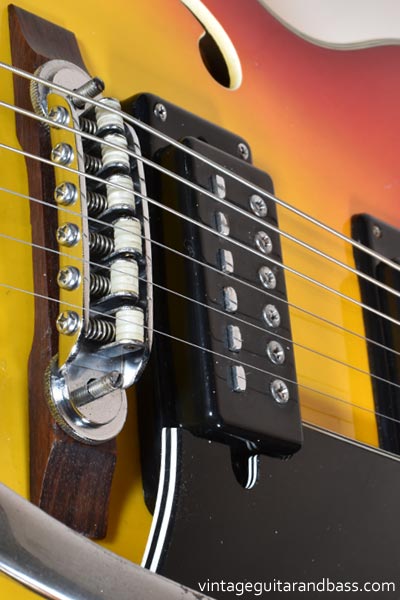
As mentioned above, the Commodore N25 evolved from the Commodore N177, and one of the most immediate differences is in the pickups. Whilst the N177 was fitted with thin trapezoid single coil pickups, the N25 had the black rectangular humbucking pickups shown here. Some of the other 335-style Matsumokus of the period had metal-covered pickups, but just about all had the floating rosewood-based bridge, with adjustable saddles as seen here. The tremolo was also upgraded, from the old long-armed lyre-style vibrato to a new Bibsgy-style unit with a harp-shaped rosewood block inset into its tail.
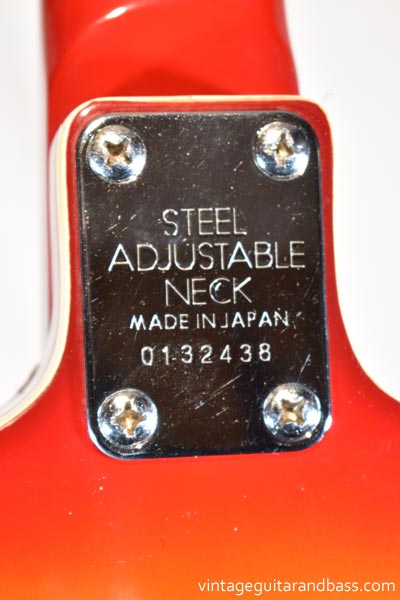
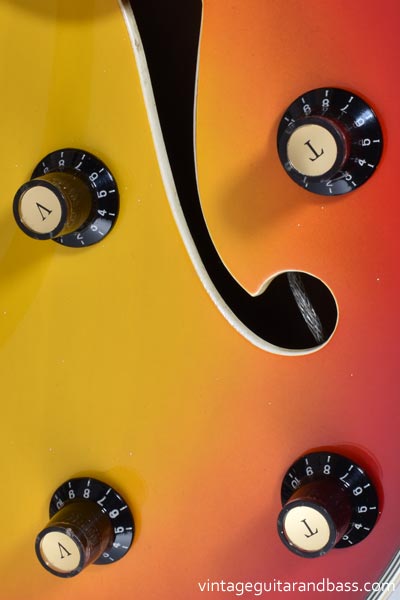
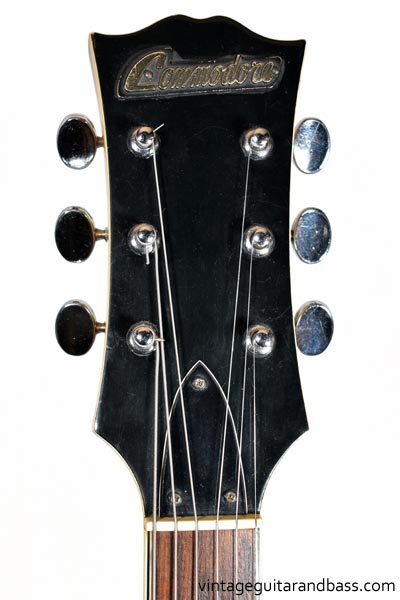
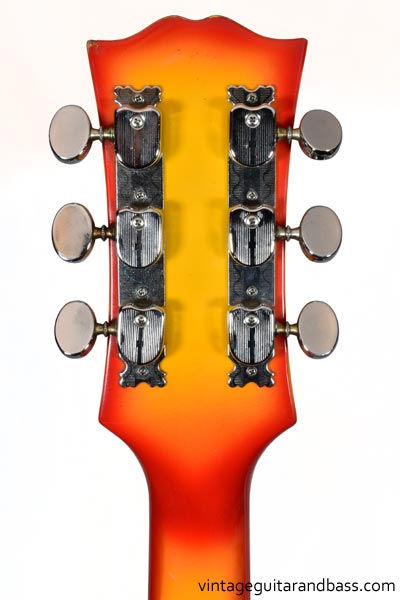
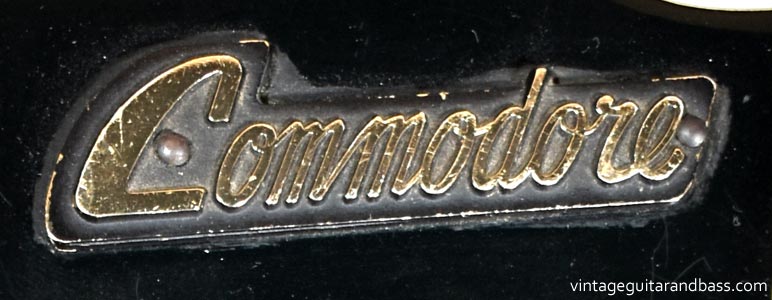
The pinned headstock logo allowed Matsumoku to offer this model with whatever branding a distributor might require. Although pretty useful in terms of production/distribution, it really is the least appealing feature of this guitar.
Extra content on this guitar is included in the Supporting Members area here
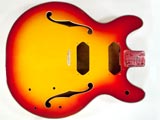
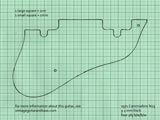
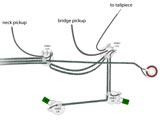
£414